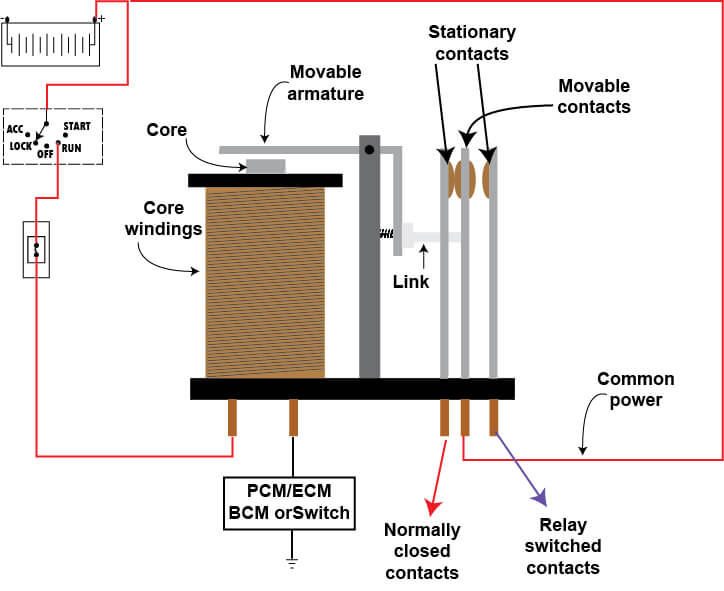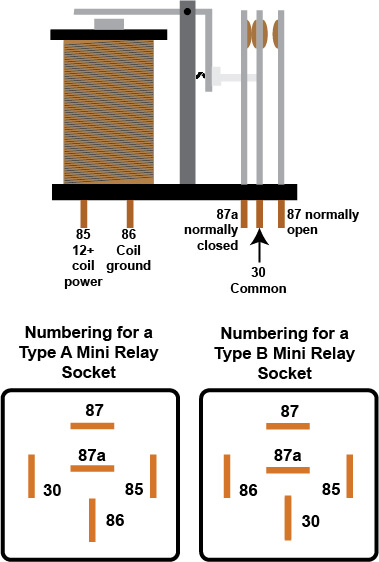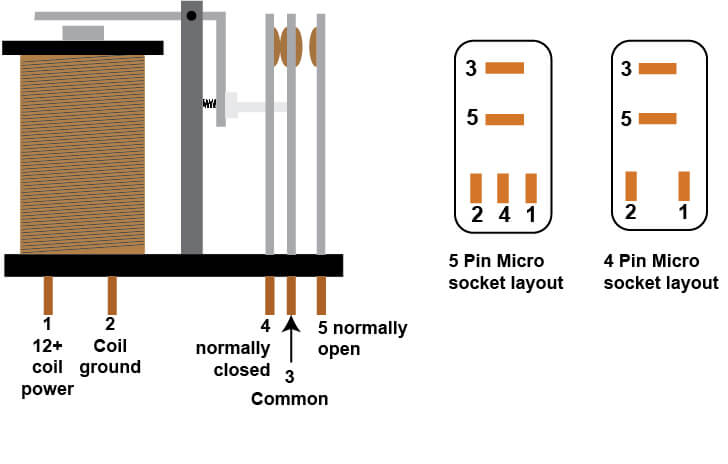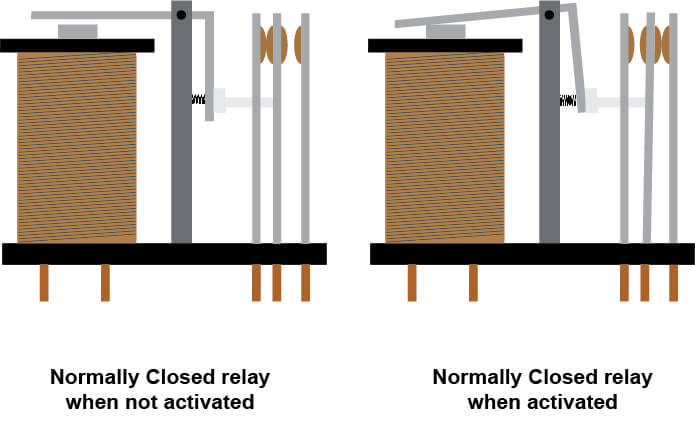How to test a relay
Test a relay on your vehicle
Is the relay bad? Know this before you test a relay
If you’re going to do auto diagnostic work, you must know how to test a relay. Automotive relays are used extensively in cars and trucks. They use a low amperage current to switch a high amperage load. Using relays allows car makers to cut down on wiring and that cuts down on cost and vehicle weight.
It’s easy to test a relay using just an ordinary digital voltmeter. Buy one at any auto parts store for less than $25. Next, get to know how relays works.
How does a relay work
A relay contains and electromagnet (called a relay control coil) that moves an arm to open and close electrical contacts. Car makers use many different wiring methods for both the electromagnet and the electrical contacts. Here are the variations.
Relay testing methods
Relay Control Coil Method 1
Switch power on or off to the control coil and ground the control coil at a permanent location. You’ll find this method used on many older vehicles for switching in headlights, the AC compressor clutch, high speed for the blower motor.
Relay Control Coil Method Method 2
Maintain power to the control coil at all times or only when the IGN key is in the run position. Then use a switchable ground to energize or de-energize the control coil. Most newer vehicle use this method. The PCM/ECM, BCM is often used to switch the ground to the control coil. Here’s a typical use:
You turn the key to START. The PCM interrogates the anti-theft system to see if you’re using an authorized key. If so, the PCM/ECM provides ground to the control coil on both the starter relay and fuel pump relay, allowing you to crank and run. In some vehicles, key interrogation may take a few seconds. In those cases, the car makerswill still provide ground to the starter and fuel pump relay, but will cut off ground to the fuel pump or fuel injectors once it determines the key is not authorized.
Parts of a relay

Parts of a relay
Before you can test a relay, you have to understand the relay numbering system
Most car makers use a mini relay for high current applications and a  micro relay for low current applications. The terminal numbering systems are different for both and knowing with socket terminals go to the control coil and control coil ground and which are the switched terminals is critical to diagnosing your problem.
micro relay for low current applications. The terminal numbering systems are different for both and knowing with socket terminals go to the control coil and control coil ground and which are the switched terminals is critical to diagnosing your problem.
Car makers use two models of the mini relay—Type A and Type B.
The inside of the relay is the same, but the terminal placement is slightly different between types A and B.

Car makers use use MICRO relays for low current applications
The numbering system for micro relays is different.

Micro relay numbering and socket layout
What goes bad on a relay?
Relay contact can pit and stick closed, causing a motor to run constantly. The easiest way to determine if the relay contacts are stuck is to tap the relay with the handle of a screwdriver. The vibration usually causes the contacts to open. If the relay opens with the tap, there’s no need to test it. It’s bad. Replace it.
The relay control coil can develop and internal short to ground, causing the fuse to blow every time the control coil gets power. The easiest test for that situation is to remove the relay and replace it with another relay from the fuse box. The relay must have the same terminal layout. If the swapped relay doesn’t blow the fuse, it’s obvious the first relay was shorted to ground.
The relay coil can also develop an open condition. When that happens the relay can’t develop a proper magnetic field and can’t close the relay contacts. The easiest way to test for an open condition is to set your meter on the OHMS reading and place the two test probes on the 85 & 86 terminals of the mini relay or the 1 & 2 terminals of a micro relay.
©, 2018 Rick Muscoplat
Posted on by Rick Muscoplat

